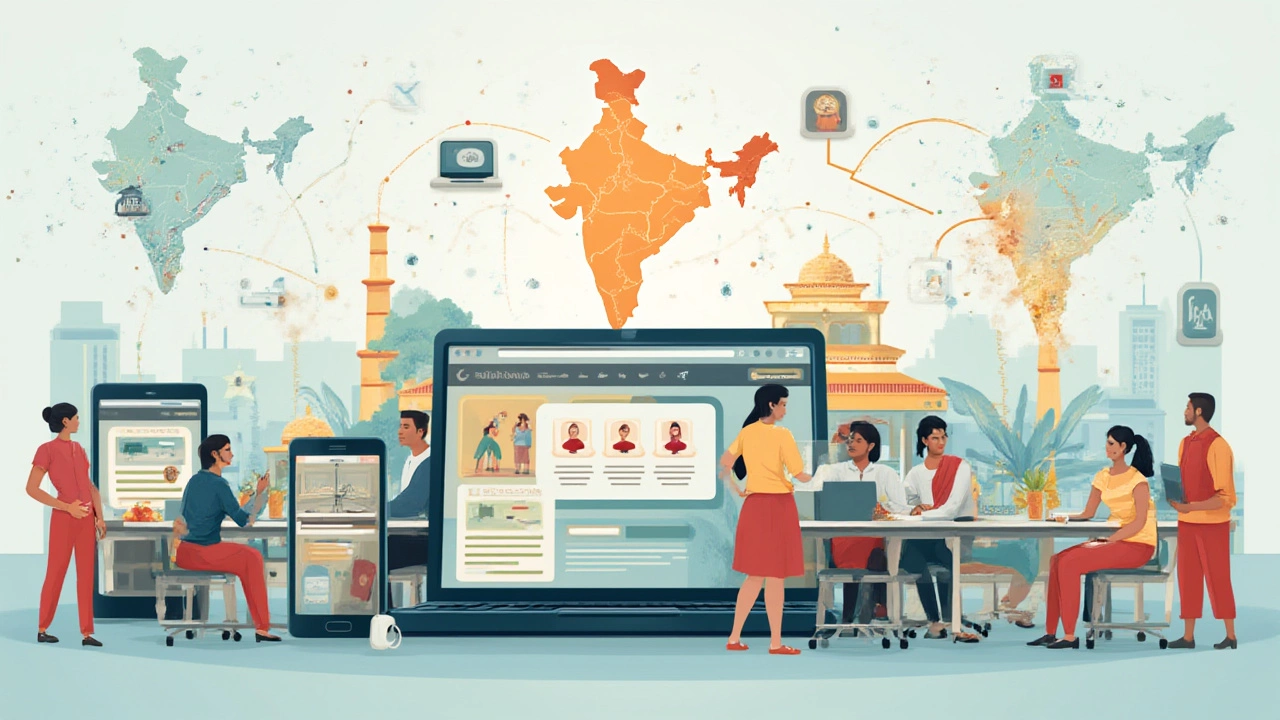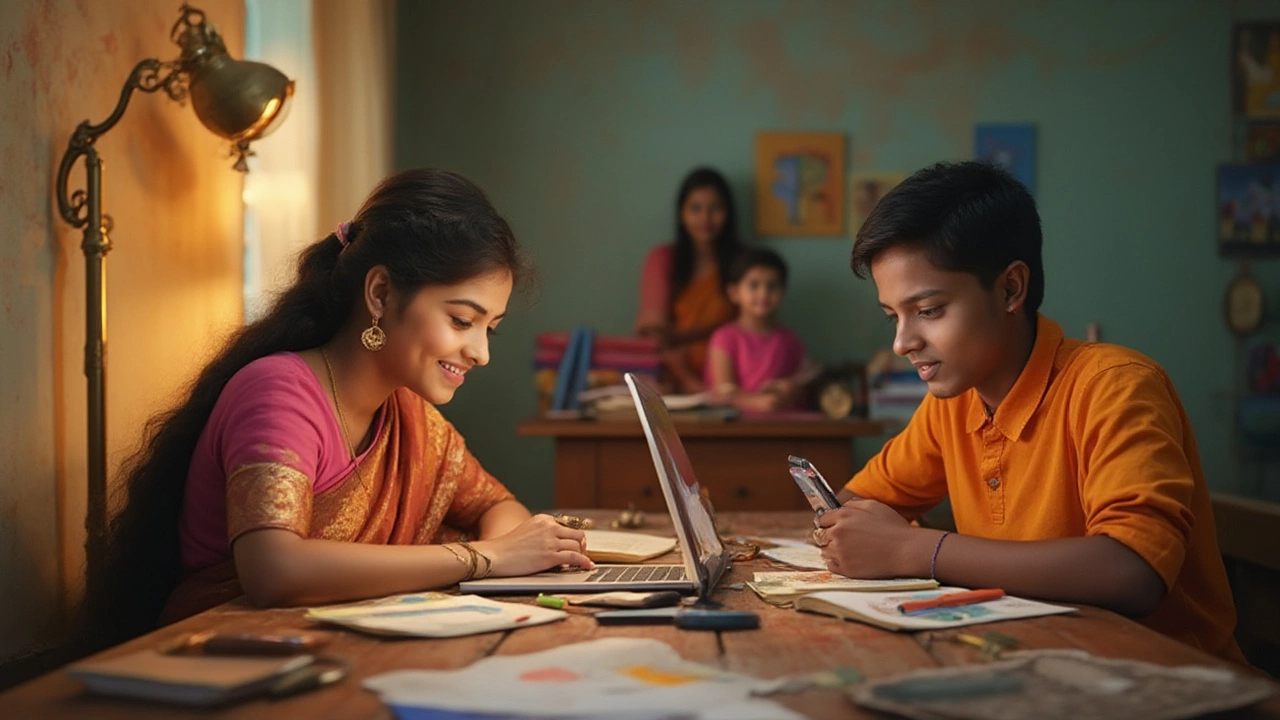You probably know someone who brags about doing all their university coursework in pajamas, thumbnails flicking between Microsoft Teams and a loaf of sourdough. This isn’t science fiction anymore; it’s distance education—though the term itself is tossed around like pizza dough across every education debate and dinner table. So what’s this mysterious idea of ‘distance education,’ really? Is it just old-school correspondence by post, or does it cover everyone binge-learning with their laptops at a café? Let’s break apart what counts as distance education, how it’s exploded in recent years, and why it’s a much bigger deal than most people realize.
The Origins and Evolution of Distance Education
Before anyone imagined Zoom or a “metaverse campus,” distance education began much more low-tech. The first official correspondence courses popped up in the 1800s. The University of London gets credit here—with their External Programme, launched in 1858. People from as far away as colonial India could sit for the same exams as Londoners, with materials mailed out and answers returned by post. Fast forward a bit, and in the 1920s, radio beamed lessons across thousands of British homes. After World War II, TV rolled in, turning living rooms into classrooms for tens of thousands more.
Then, in the 1970s, the UK’s Open University started sending out recorded lectures—on cassette tapes!—as well as packs of physical study materials. It soon had loads of students who’d never set foot on campus. This was a game-changer for anyone shut out of ‘normal’ university life: single parents, people with jobs, folks living somewhere remote. By the '90s, email replaced snail mail, and the first websites springing up made it clear—we’d shifted onto a new gear.
Today, distance education most often means anything from giant open online courses (MOOCs—Harvard, anyone?), to micro-courses on Udemy, to school kids logging into Google Classroom. But the common thread? The teacher and the learner aren’t physically together. The tools have changed—paper packets are mostly out, interactive platforms and live video are in. But the main aim is the same: making education possible, no matter where you happen to be.
Here’s a quick look at some of the major milestones in distance learning:
| Year | Milestone |
|---|---|
| 1858 | University of London launches External Programme |
| 1922 | BBC broadcasts educational radio lessons |
| 1969 | Open University founded in the UK |
| 1995 | Stanford launches first online courses |
| 2012 | Massive Open Online Courses (MOOCs) boom |
| 2020 | Pandemic accelerates mainstream online learning |
From snail mail to streaming live lectures for millions, the evolution’s wild. But at its heart, distance education is about breaking barriers between people and knowledge. Nobody’s left out because they can’t show up in person.
Key Elements That Define Distance Education
It’s easy to imagine distance education as just any kind of learning where the teacher’s not in the same room as you. But it’s got a bit more going on than that—otherwise, reading a textbook on your own, or watching YouTube tutorials at random, would qualify. That’s not what academic bodies mean when they talk distance education.
Instead, distance education has a few essential features:
- You and your teacher (or tutor, or course leader) are physically separated, usually for the whole course, not just for a lesson or two.
- Your communication is done through a ‘channel’—mail, radio, TV, or nowadays, digital platforms.
- There’s two-way interaction, even if it’s just submitting work and getting feedback. It goes both ways—it’s not just you passively watching or reading.
- The materials are specially designed for learning at a distance. We’re not just talking about standard classroom handouts.
This means proper distance education puts thought into the materials and structure. You get planned lessons, assessments, scheduled video calls, forums, sometimes even virtual labs or simulations.
A key fact: The UK Quality Assurance Agency defines distance education as "a mode of delivery in which students are not physically present at the site of the institution and receive teaching via digital or postal means." That’s the sort of definition most schools and universities stick to.
So what’s not distance education? If you’re just watching a lecture uploaded onto YouTube without any way to interact or get feedback—that's ‘asynchronous learning content,’ not true distance education. Same goes for reading a textbook on your own or using Wikipedia in your spare time. For it to count, there must be structured teaching, participation, and at least some way to check you’re actually learning.
Let’s bust a popular myth: It’s not just university stuff. Loads of schools, training colleges, even trade and skills courses use distance learning setups. Think of IT certifications run online, language bootcamps on apps like Duolingo, or government job training programs that run entirely over the internet.

How Technology Has Revolutionised Remote Learning
Let’s face it—distance education wouldn’t be everywhere if we still needed to wait for the Royal Mail to deliver coursework. Tech is what cranked distance learning into high gear. Fiber internet, affordable laptops, video streaming, education platforms that track everything—all of it’s made the experience way richer, more flexible, and even kind of fun.
Today’s remote learning tools run the spectrum. Some schools still use basic tools like email or WhatsApp for updates, but the heavy-hitters are full learning management systems (LMS) like Moodle, Blackboard, or Canvas. These let you submit work, join forums, take quizzes, watch recorded material, and score feedback all in one place. During the 2020 lockdowns, schools in England reported that 94% of students enrolled in distance learning courses were using at least one digital platform, according to figures from the UK Department for Education.
But it’s not just about sticking up assignments online. Interactive features keep students together even when apart: real-time video lessons, live polls, breakout chat rooms, even shared whiteboards. On some platforms—like Coursera, EdX, or OpenLearn—you can take part in courses built by top unis, complete with video lectures, forums, and marked assignments.
Here are some of the big tech developments driving remote learning:
- Video Conferencing: Platforms like Zoom, MS Teams, and Google Meet make it easy to run live classes for hundreds of students at once, with screen sharing and breakout rooms.
- Cloud Storage: Upload and instantly access worksheets, recorded lectures, and projects from anywhere.
- Mobile Learning: Almost every platform now includes a smartphone app, so you can work from the bus, the train, or in bed (no dress code required).
- Adaptive Learning: AI tools now suggest personalised quizzes and reading based on your progress, nudging you forward when you’re stuck.
What’s really cool: distance education isn’t just about formal schooling. Businesses use it for onboarding and staff upskilling, charities for running support groups, and even public health campaigns for getting out information quickly. For freelance or gig workers, it’s sometimes the only way to keep qualifications up to date.
The Pros and Cons: Real-World Challenges and Benefits
Everyone’s got an opinion about remote learning, and honestly, there are some strong arguments on both sides. You can’t ignore the flexibility: for loads of students, the chance to learn from anywhere (and at any time) is a total game-changer. Someone balancing work shifts, kids, or even living in the back end of nowhere—they can sign up when it suits them. According to a 2023 ONS survey, over 54% of UK graduates under age 35 had completed at least one accredited distance education module.
Here’s the stuff that people really love about distance education:
- Study at your own pace—pause, rewind, and review as often as you need.
- No travel: Eliminate annoying commutes entirely (major win in winter in the UK).
- Often cheaper—some courses are free, and even paid ones can skip the hidden costs like campus fees or transport.
- Perfect for people with health conditions, caring duties, or tricky schedules.
- Giant choice: tap into global universities or niche experts you’d never find driving around your town.
But then, the flipside can be rough:
- Keeping motivated by yourself can get tough—nobody’s nudging you if you slack off.
- Self-discipline is key. Without a timetable or classmates to push you, it’s easy to fall behind.
- Technology fails—dodgy WiFi, broken laptops—can wreck a day’s learning fast.
- Some fields (like medicine, advanced engineering) need practical, hands-on training that remote setups can’t always deliver.
- Social side is different—there are fewer opportunities to make friends, network, or get involved in campus life.
Still, many institutions try to fix these. Online learning communities, mentorship programs, and hybrid courses blend remote with on-campus sessions. Even VR headsets are creeping in for lab simulations or group ‘meetups’ in virtual spaces. The bottom line? Distance education isn’t perfect for everyone, but the gaps are closing all the time—and tech keeps making it better.

The Future of Distance Education: What’s Next?
If you think distance education has peaked, you might want to check out some of the plans rolling out from universities and ed-tech startups. Hybrid models, with students toggling between campus and cloud, are on the rise. Flexible degrees, where you can “stack” mini-qualifications from different providers (and even different countries), are catching on fast. In 2024, King’s College London announced that over 40% of new master’s students opted for some form of hybrid or purely remote study route.
Ed-tech businesses are betting big on smarter, more personalised remote learning. Artificial intelligence that adapts the material to suit every learning style and pace. More immersive experiences—think AR and VR field trips, or virtual internships with remote teams.
One major shift: assessment is changing. Proctored online exams, peer reviews, and continuous feedback are starting to take the place of old-fashioned written exams. Blockchain is even being trialled to keep credentials safe and verifiable—a bonus in fighting fake degrees.
But there’s work to do. Making sure everyone has decent internet and a good device—that’s non-negotiable. More support for disabilities, more language options, and better community-building tools remain major targets. The Department for Education’s 2024 digital strategy notes a goal for all UK students to have universal access to high-quality, affordable online courses by 2030.
So, is distance education the future? Not the only future, but it’ll be a massive part of it. Students now have the power to shape their education to fit their lives—not just their postcode. And whether you’re teaching yourself Java from a tower block in Birmingham, or getting a social science degree while hiking the Highlands, you’re part of a much bigger revolution—one that’s been in the works since the postman was king.
